These lock boxes are no longer produced, and have not heard of any real estate agents using these in years. They all use the electronic ones. Since that is the case, don't mind posting this here. If it is determined that it needs to be moved to advanced forums any, the please excuse me, and move it.
MULTACC Real Estate Lock - Warning - very picture heavy!!!
This was a $3 find at a swap meet. No key, no combination(s). The only worthwhile lock in the whole flipping swap meet
This type of lock is used by real estate agents who want to sell your house. This particular lock is no longer produced or supported. I am also looking for a key for this lock, so if you have one, PM Me!!! The real estate agent locks the shackle onto your door knob, water pipe, or other such 'secure' location, and the door at the bottom opens, holding the key to your home.
The Front:
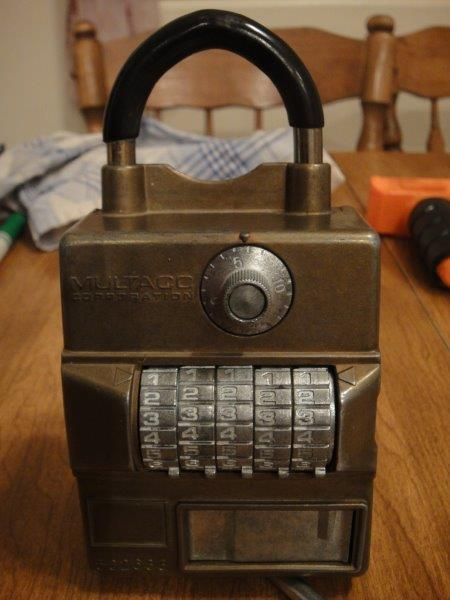
The right side: The slot is the key hole.
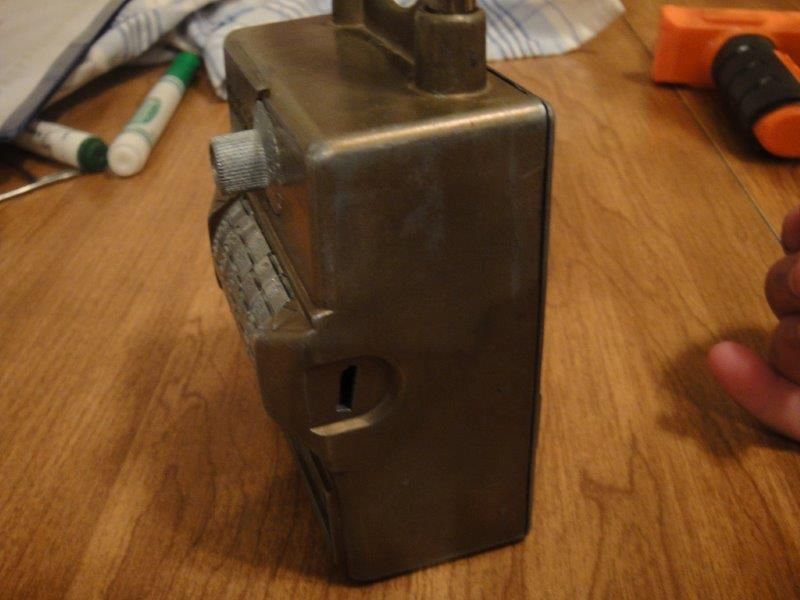
The Bottom:
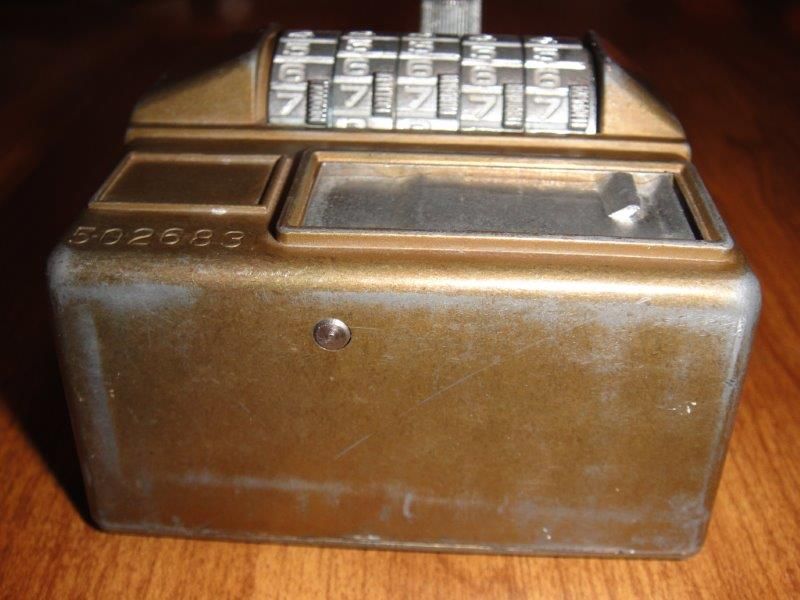
The Back. I have removed one of the rubber squares at the bottom, and punched a hole in the cap to get it off the first time as I was figuring this thing out. More on that later, too.
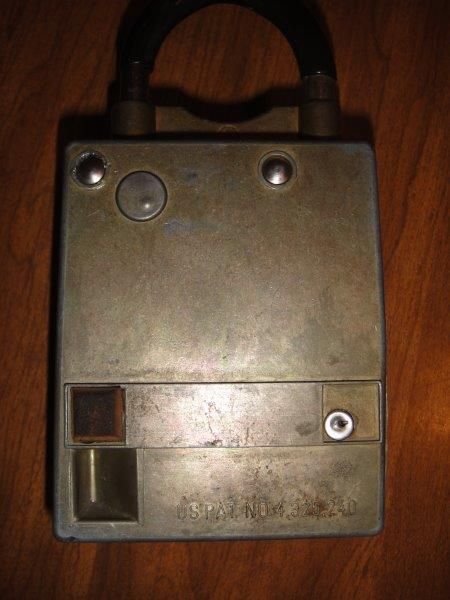
This combination dial opens the shackle. 20 numbers on the dial, and if you work the shackle a bit, there is about 1 number high or low play. Three number combination, so 8,000 theoretical differs. Clockwise a few turns to the first number, counterclockwise past the second number once and stopping on the second number the second time, and clockwise to the final number, then pull the shackle. You will need to push the shackle down before dialing the number. More on that later.
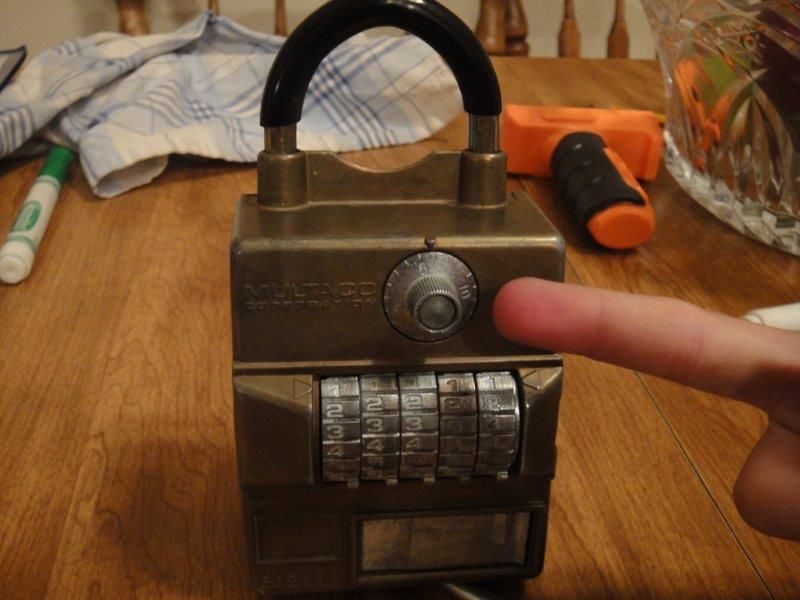
And the open shackle:
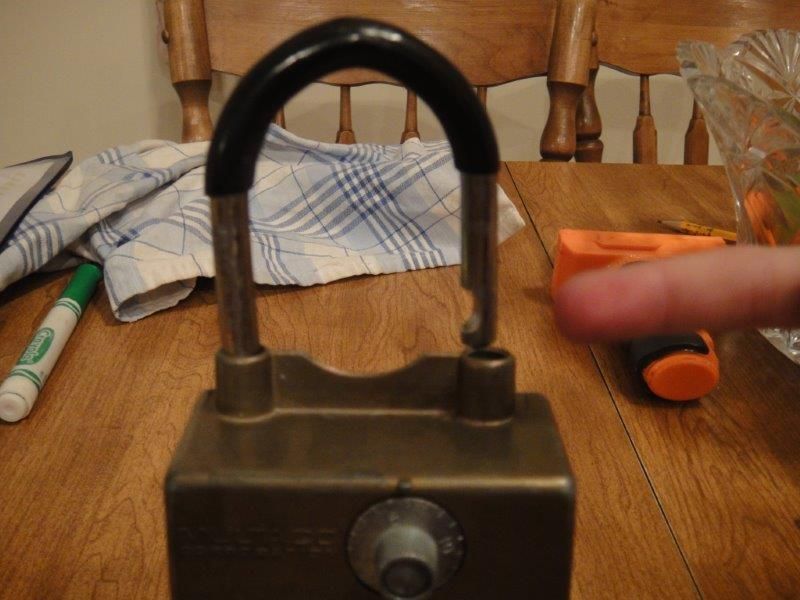
That is my son's finger, pointing to the parts of interest! He is soooo helpful!
While the numbers for the combination that opens the key tray go from 1 to 9, the finger prevents any actual numbers above 7 from being entered! Sounds like false advertising to me!
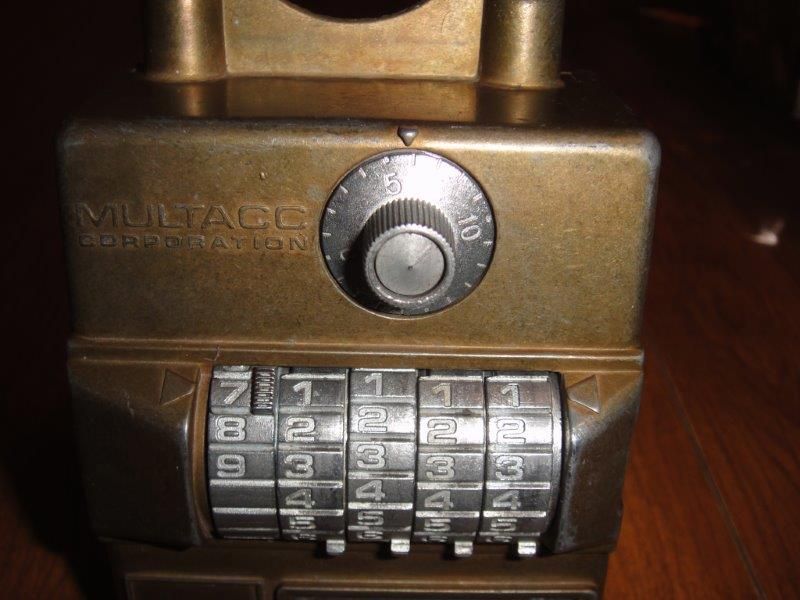
The back, with the caps removed. Found this out by accident, as I was trying to remove the fulcrum pin for the key tray at the bottom of the lock. By the way, removing the fulcrum pin does not allow the key tray to be opened. Those things that look like large rivets are just caps covering the ultra high security fasteners that only a specialized tool can open:
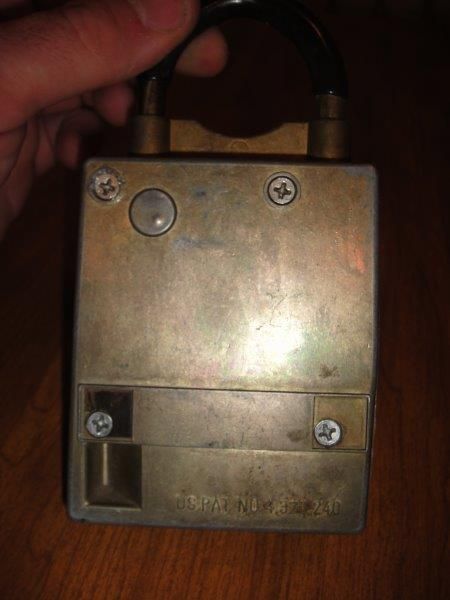
Those fasteners are removed. Lucky for me, being a mechanic, I just happened to have one of those high security fasterner removal tools.
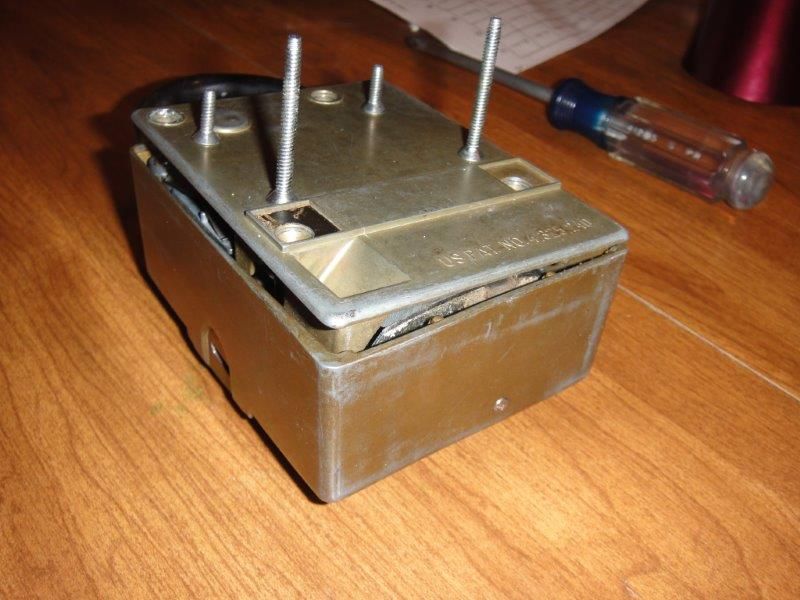
And the first of the gut-shots that Oldfast hates so much.
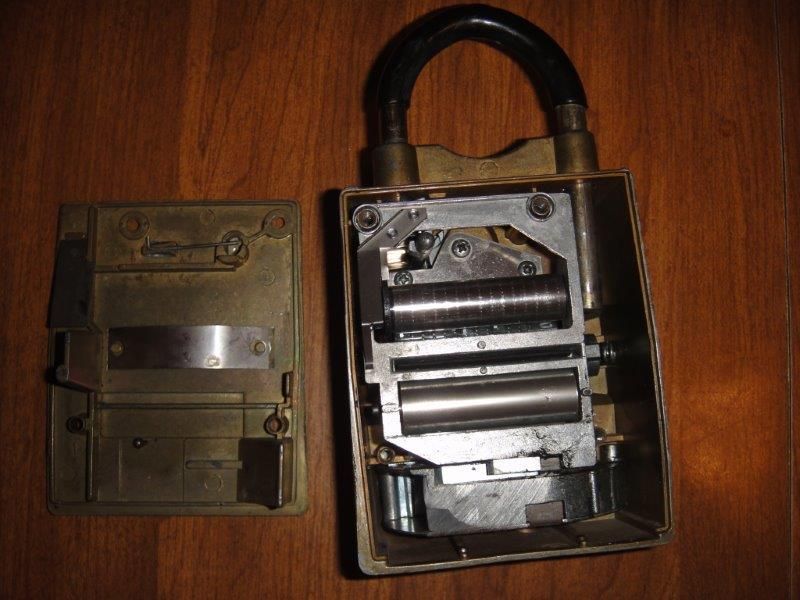
At the top of the lock in the above picture, you can see the locking lug and combination disks for the shackle. At the bottom you see the key tray. In the middle you see the film/carrier that keeps track of every key/combination used to successfully open the lock. The carrier also keeps the key tray shut until the key and combination is entered.
Here is the film carrier
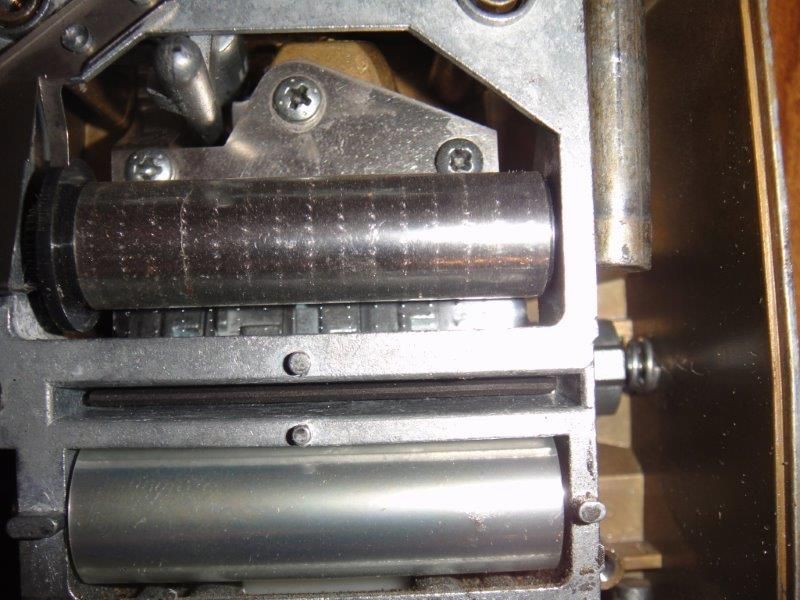
and the bottom of the carrier:
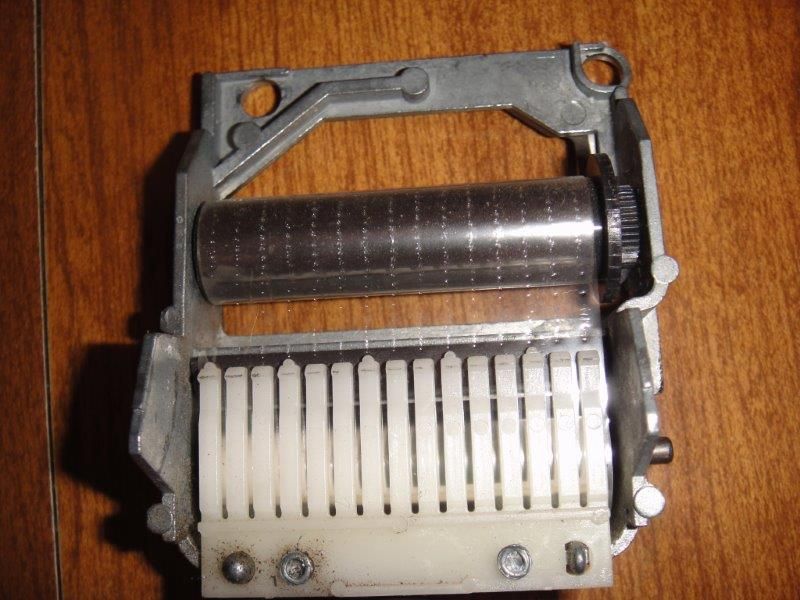
The back side of the dials. Those shapes apply a unique pattern for each number on the dial. Each dial wheel controls three fingers on the film carrier. 5 wheels, 15 fingers.
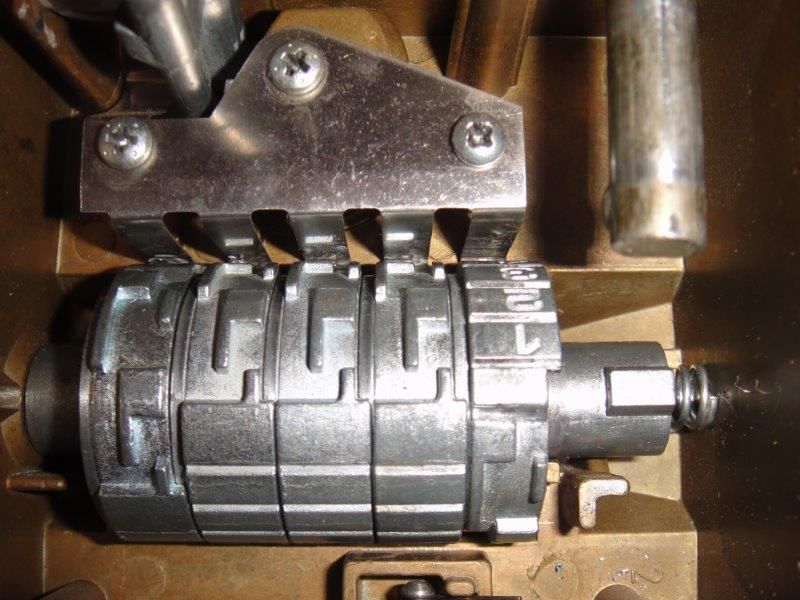
An end view of the keyway and wheels. Inside the keyway, you can see a post sticking up. More accurately, there are 5 posts, one for each slider, one slider for each wheel.
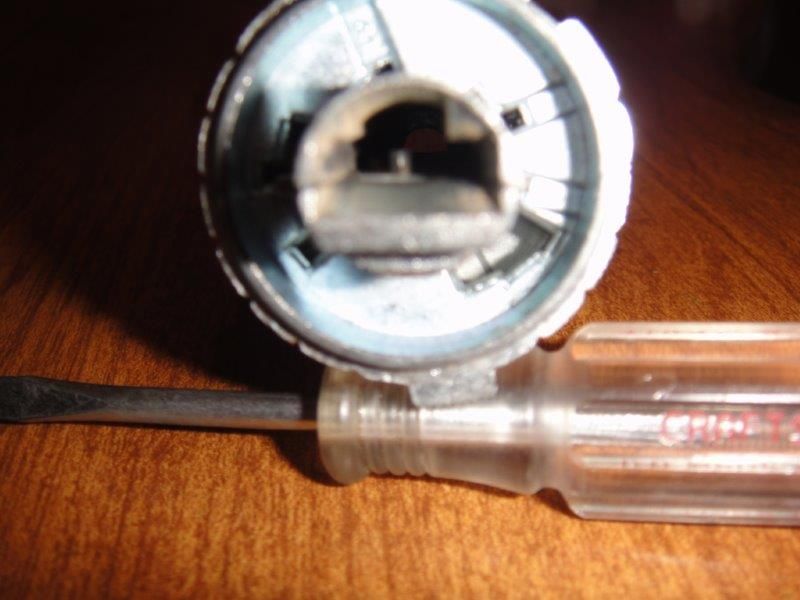
One side of the wheels. The wheels are all oriented in the following two pictures the same way. Yes, the cuts in the wheels have a different pattern for each wheel.

The other side of the wheels:
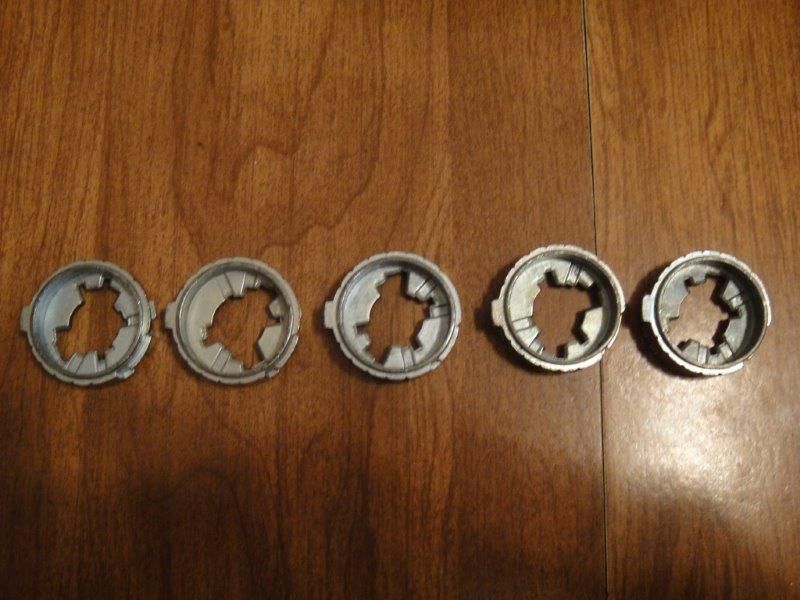
If you noticed, the wheels have a step on each side, allowing them to fit inside each other. This makes decoding by shimming them difficult. Knowing how the wheels are cut, shimming does not help, anyway! You already saw that each wheel has a different pattern of cuts, and the cuts do not match up even if the numbers do. Here is another surprise - the wheels have false gates in them, too! The slider can partly go into the slot due to the taper on the false gates, but it can not go all the way through.
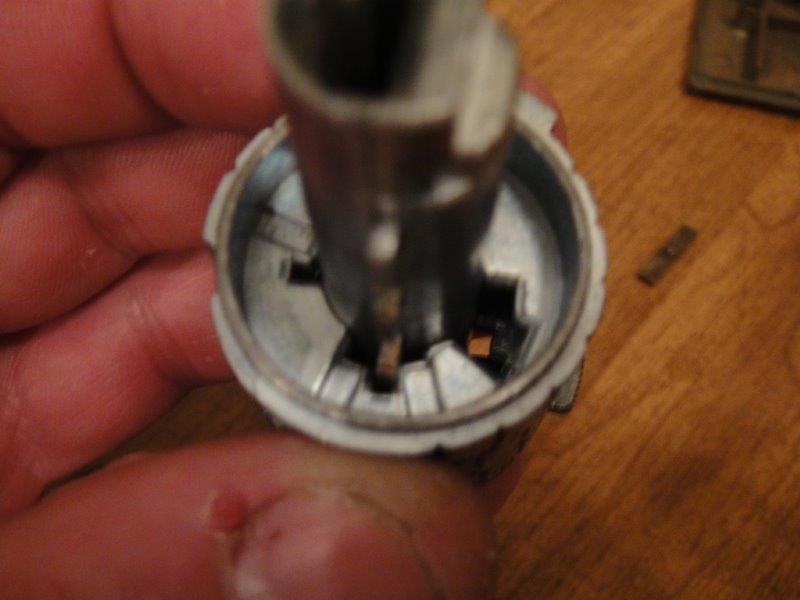
The spindle without the wheels on it. Now you get your first decent view of the sliders.
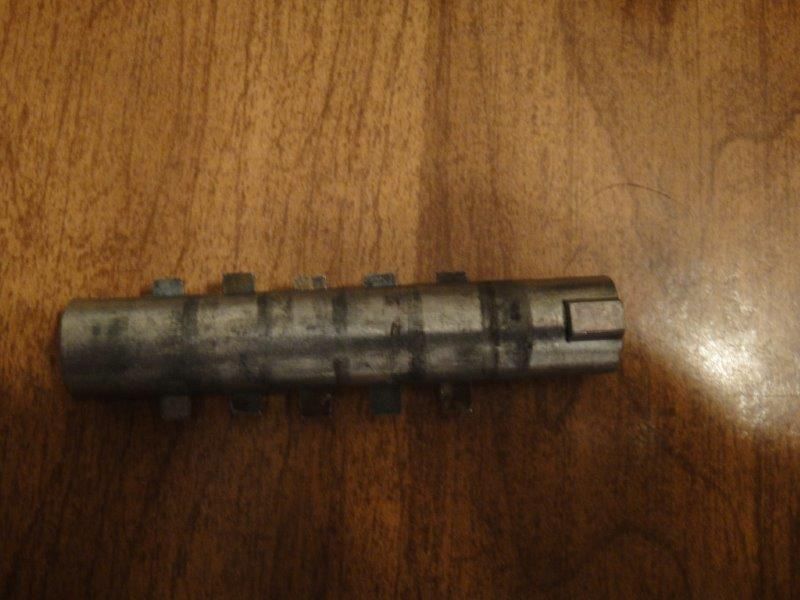
The spindle opened up - yes, it is two halves, with the sliders inside. You can see that a laser-cut key is used to position the sliders at the proper height for the specified combination number. The beauty of this system is that you can not visually decode the combination from the key, because the same heights of sliders would have different numbers that they would work with on the wheels. In this manner, each real estate agent could have their own key and combination. Each key/combination that opens the lock leaves an imprint on the film, so there is a record of who was in the house. Also, if somebody finds a key, or knows the combination but does not have the key, the homeowners key can not be accessed. Unless they have that super secret tool and know about the caps.
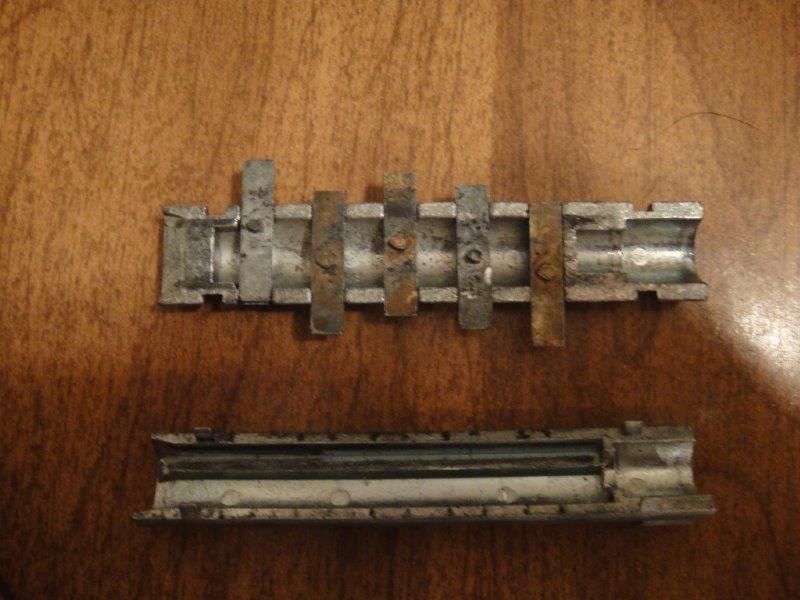
Here is a view of an individual slider.
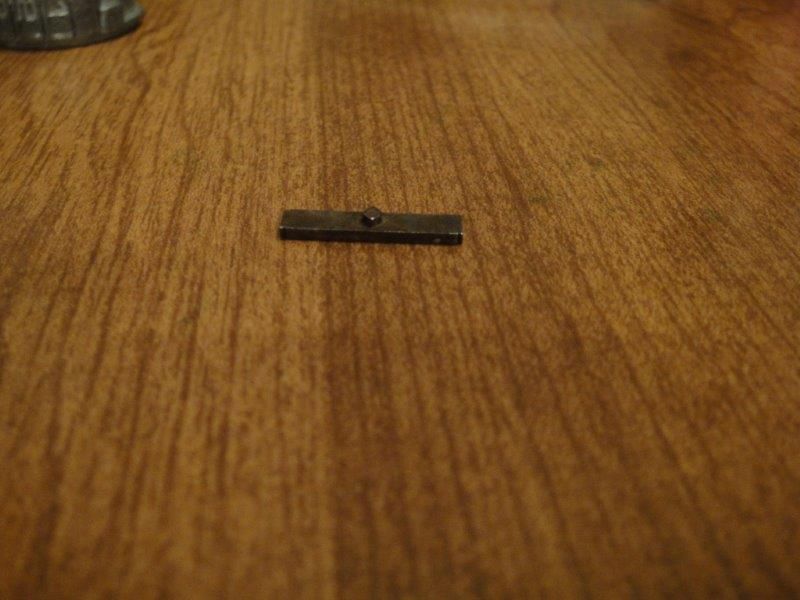
The film carrier normally sits on the spindle like this. (Wheels are removed for clarity)
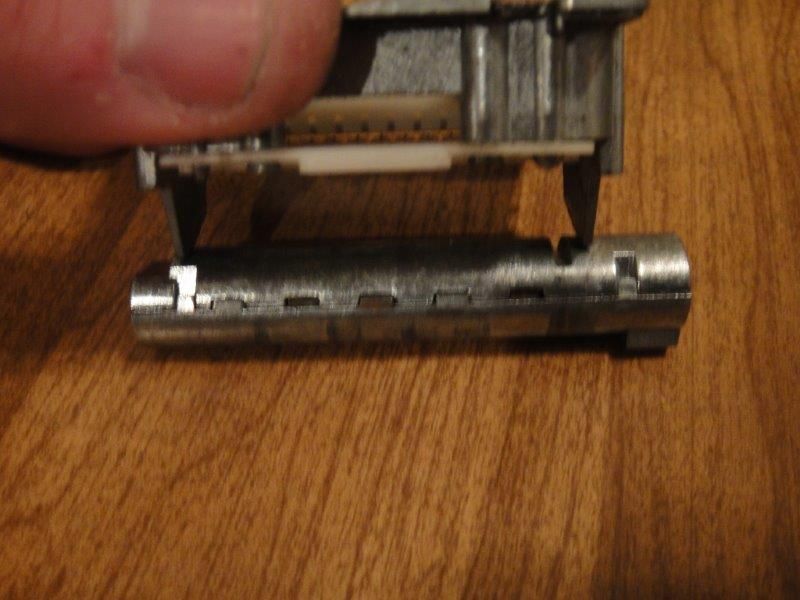
When the correct key and combination are entered, the spindle and sliders can fit through the proper slots in the wheels and the key is used to push the spindle over just about 1/8" or so (about 2-3mm). Then the film carrier can drop into the slots in the spindle like so:
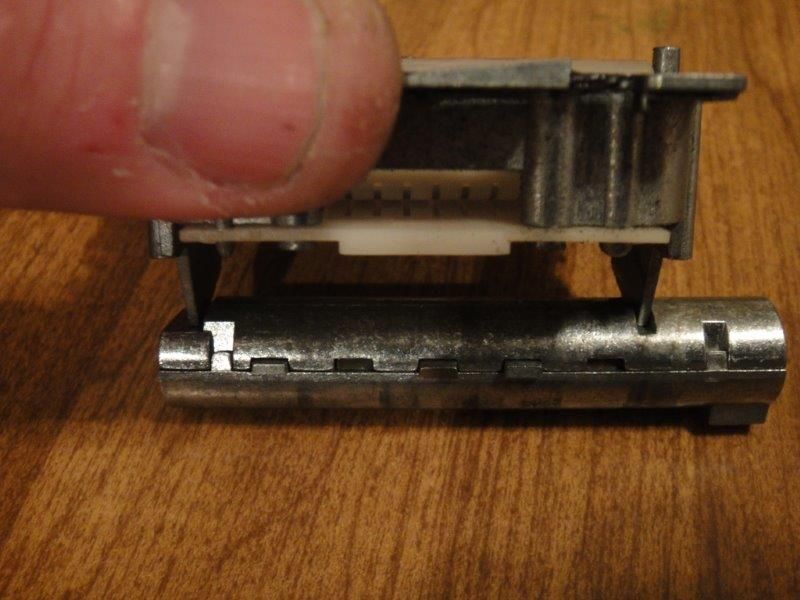
When this happens, several things happen at once. A spring spins one side of the film roll, so fresh film is placed under the fingers. Those fingers on the film carrier are pressed against the pattern on the back side of the wheels and forced to imprint the raised parts of the wheel into the film. And finally, as the bottom end of the film carrier comes forward, it no longer blocks the locking tab on the key tray, and the spring loaded tray pops open, letting you get the key. Or candy if your real estate agent is twisted.
Here is a view of one wheel set against the fingers on the film carrier. You can see the punched codes on the film.
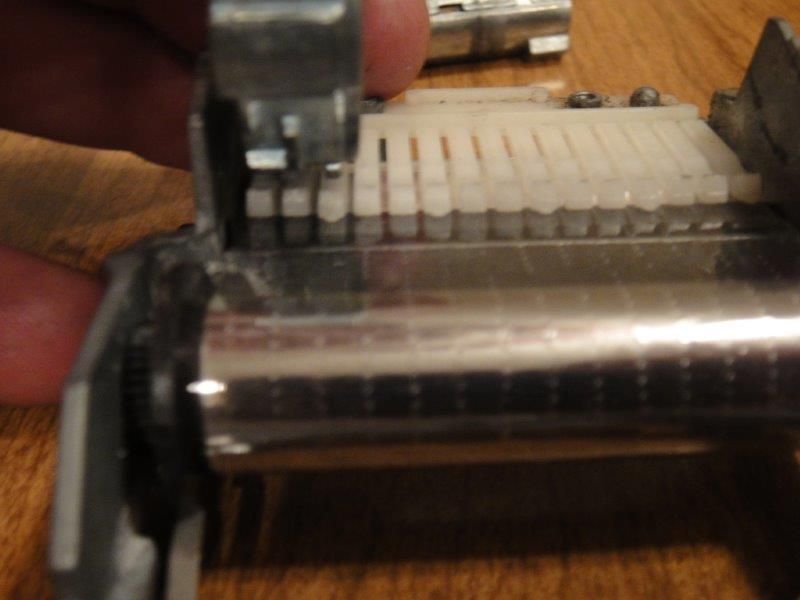
Oldfast would kill me if I did not cover that dial combination lock that opens the shackle, especially since it is the one he graphed onto that egg.
Guess I'll just have to die. Here is the inner parts of the key tray. In the center closest to you in the picture, is the post that the film carrier keeps from moving to open the tray.

The tray, spring, and fulcrum pin that keep the tray in place. The pin is the one that can be seen on the bottom of the lock waaaaayyyy up above.
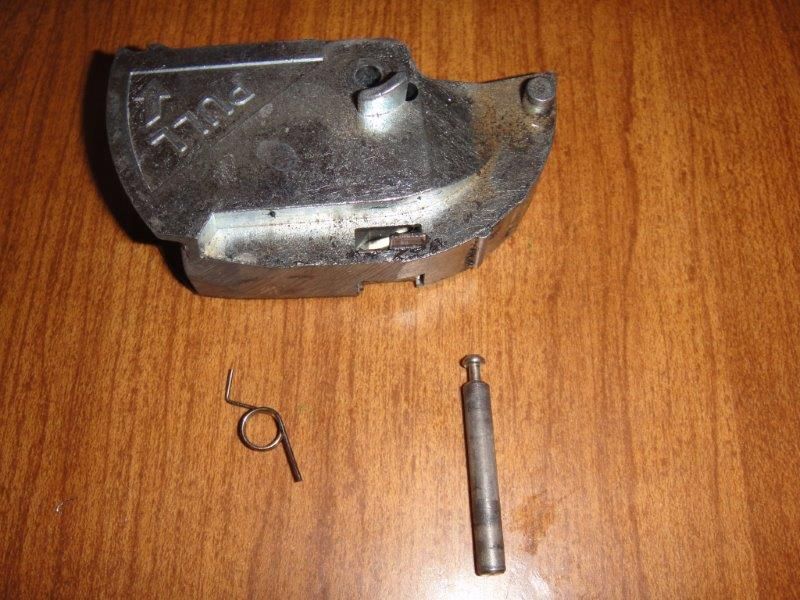
OK, OK Mike! Here is the inner view of the bolt and disks.
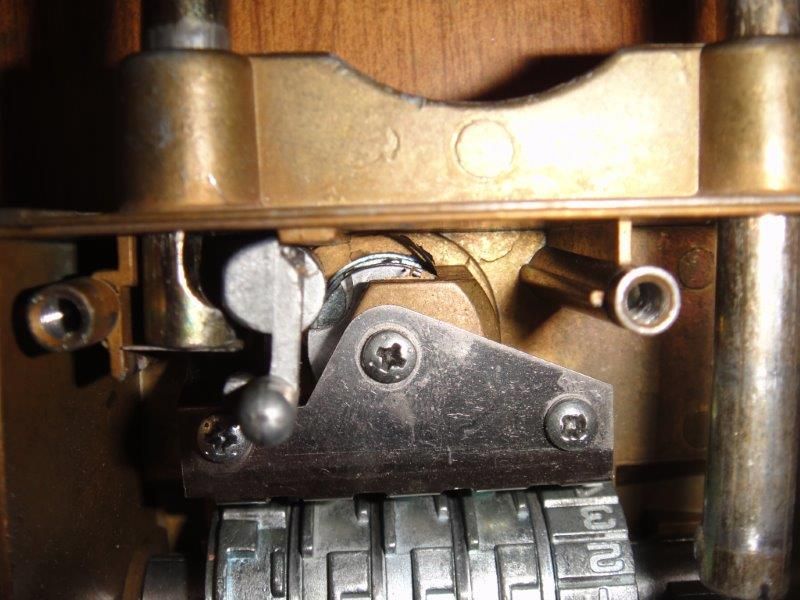
The locking bolt
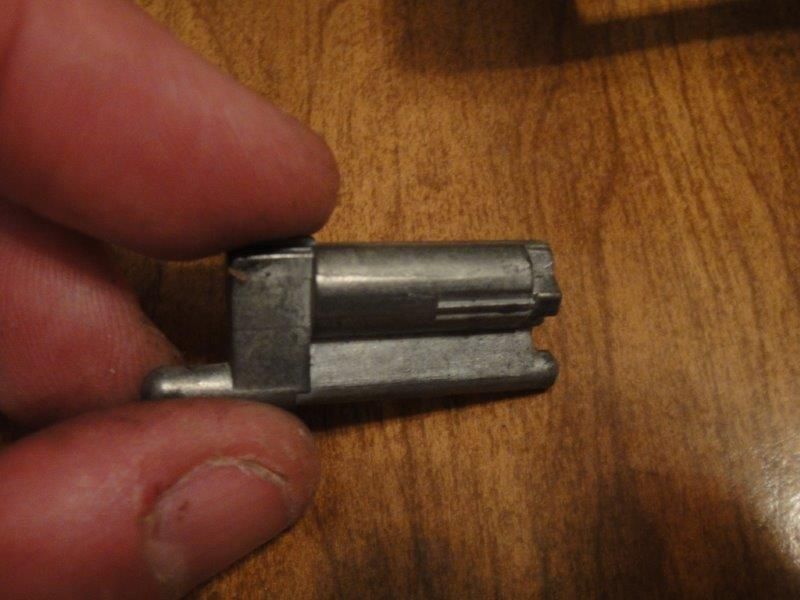
The disks with the bolt removed
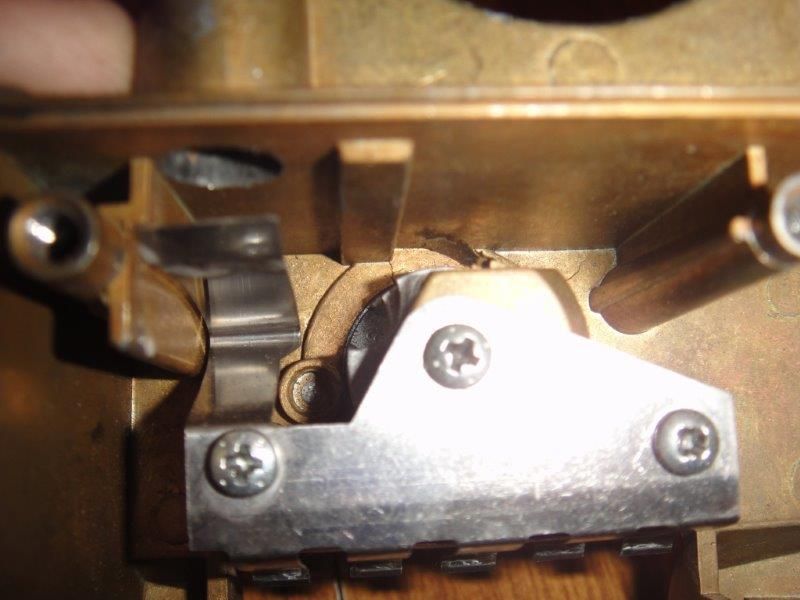
and the disks removed. They are removed by taking out that center screw, which holds in the spindle of the dial.
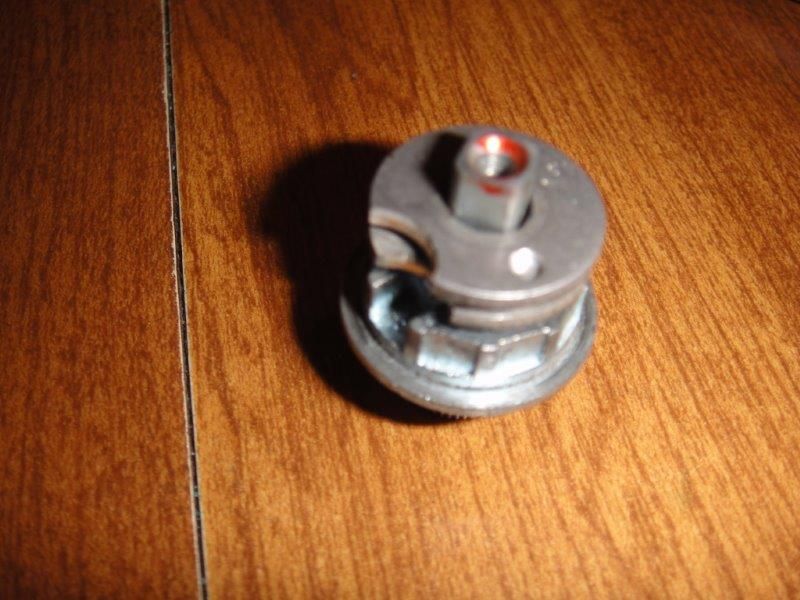
The disassembled spindle, dial, disks and spacers. You can see the combination on the disks...5-1-6
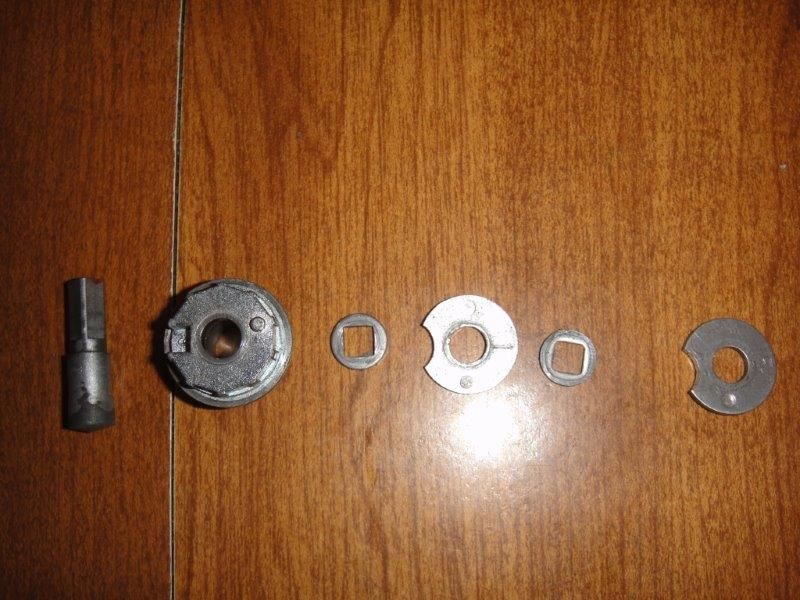
And flipped over. You can also see that the number 3 wheel has false gates to make manipulation more difficult. If the shackle is pulled outwards to try spinning the dial to figure out the combination, the dial will not turn due to these false gates.
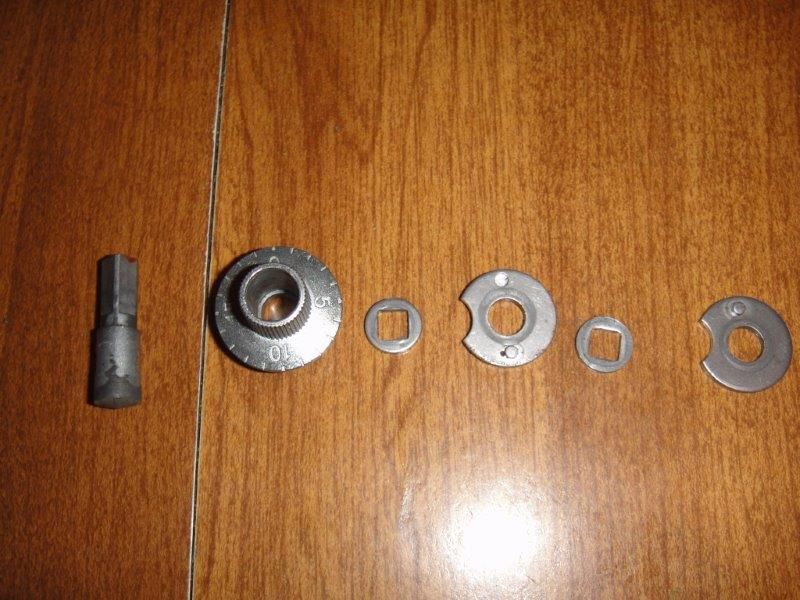
The inside of the spindle hole, and the spring I did not remove for the picture. Yes, it will fall out.
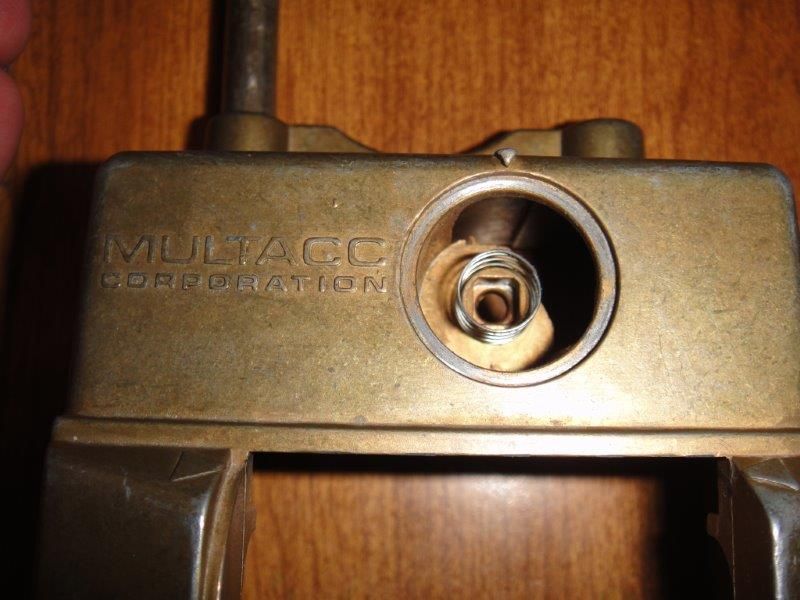
Hope this was worth the LOOOONG read.
Gordon




